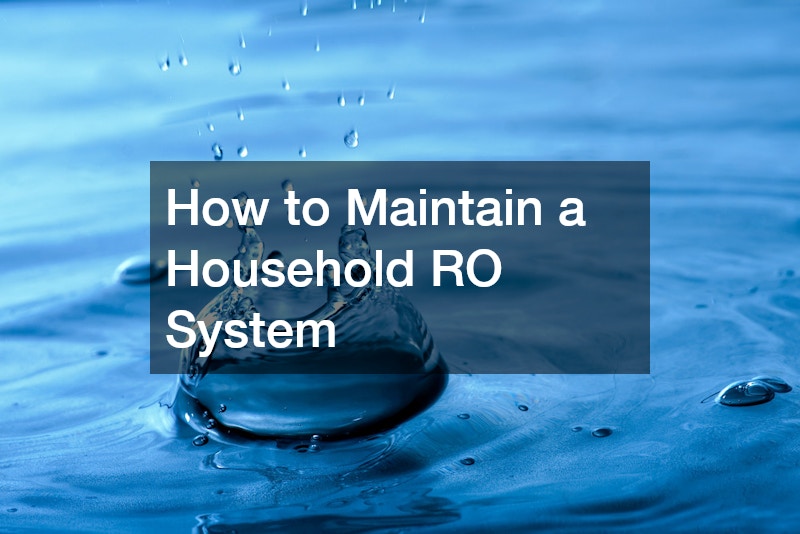
This article will explore the essential steps and considerations for maintaining a household reverse osmosis (RO) system. Proper maintenance is crucial to extending the system’s lifespan and ensuring your water is clean and safe. It also helps to protect your health and preserve the efficiency of the filtration process.
What is the Best Routine Maintenance for an RO System?
Regular maintenance of a household RO system includes a series of essential tasks designed to ensure optimal performance and longevity of the unit. Periodically conducting a thorough inspection of the entire system can help identify potential issues before they become significant problems. A well-maintained RO system enhances water quality and improves the filtration process’s efficiency.
One of the fundamental components of routine maintenance is the timely replacement of filters, which act as the first line of defense against contaminants. Filters should be replaced according to the manufacturer’s guidelines or when any decline in water quality is noticed. Additionally, sanitizing the RO system regularly can prevent the growth of bacteria and ensure that the water remains safe for consumption.
Visual inspection for leaks, loose fittings, and unusual noises can also prevent long-term damage. Addressing these issues promptly can save time and money while safeguarding the entire system’s functionality. A consistent maintenance schedule will lead to better water quality and a longer lifespan for the RO system, ultimately providing your household with peace of mind and health benefits.
How Often Should You Replace RO Filters and Membranes?
The frequency of RO filter and membrane replacement depends on several factors, including water quality and the system’s usage levels. Generally, pre-filters need replacement every six months to one year, while post-filters can last up to a year. Membranes, central to the osmosis process, have a two-five-year lifespan, contingent on maintenance and water conditions.
Several indicators suggest it’s time to replace filters or membranes within your RO system. A noticeable decline in water pressure or unusual taste and odor in the water are primary signs that components may be worn down. Additionally, an increase in Total Dissolved Solids (TDS) levels, measured using a TDS meter, indicates reduced filter effectiveness.
As mentioned earlier, maintaining a record of replacement dates and monitoring the signs can help in timely and effective component replacements. Proactively updating filters and membranes enhances the system’s performance and ensures uninterrupted access to safe drinking water. Consistently monitoring these components’ health is fundamental to ensuring optimal filtration efficiency and system longevity.
What are Common RO System Issues and How to Troubleshoot Them?
Household RO systems, while usually reliable, can occasionally present specific issues requiring attention and troubleshooting. Common problems include low water pressure, leaks, and unexpected noises during system operation. Each issue often points to particular system parts needing adjustment or replacement.
Low water pressure is frequently caused by clogged filters or a failing membrane, which require inspection and possible replacement. On the other hand, Leaks are often due to loose connections within the system, necessitating a review and tightening of all fittings. Unusual noises typically indicate blockages or air trapped within the tubing, which can be fixed by clearing the lines and ensuring all connections are secure.
Addressing each of these common problems with a systematic approach will help restore the system’s functionality. Consulting the RO system’s manual for troubleshooting tips or contacting professional services when necessary can provide additional assistance. These steps ensure the issues are resolved quickly, maintaining the RO system’s smooth operation and efficiency.
How Can You Improve the Efficiency and Longevity of Your RO System?

Enhancing the efficiency and longevity of your RO system begins with adopting proactive maintenance strategies that focus on consistent care and optimized usage. Implementing a regular maintenance schedule and following through with detailed inspections can help identify and mitigate potential problems early on. This preventive approach ensures continued high-quality water output and system performance.
To further boost system efficiency, consider integrating technologies like water softeners or sediment pre-filters when necessary. These add-ons can extend the life of primary filters and membranes by reducing the strain from hard water or heavy sediment loads. Additionally, you can use an ultrafiltration system to remove even smaller particles.
Staying informed about the latest innovations and updates in RO technology can also offer new solutions and optimizations for existing systems. Using manufacturer resources or professional maintenance services can provide excellent insights and updates. By enacting these strategies, you maintain a reliable source of clean water and maximize the return on your investment in the RO system.
Following the outlined maintenance guidelines ensures that your household RO system functions efficiently, providing safe and clean water for your daily needs. Regular maintenance saves costs in the long run and protects your health. Regular maintenance of filters and membranes, systematic troubleshooting of issues, and optimization strategies contribute to the system’s efficiency and longevity. Ultimately, these efforts provide peace of mind, knowing that your household benefits from the highest-quality water possible.
